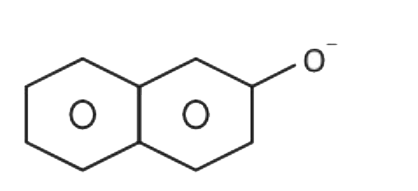Antifluorite structure is derived from fluorite structure by:
heating fluorite structure crystal lattice
subjecting fluorite structure to high pressure
Inter chaning the positions of positive and negative ions in the lattice
none of these
The correct Answer is:C
To derive the antifluorite structure from the fluorite structure, we need to understand the arrangement of ions in both structures. Here’s a step-by-step breakdown of the process:
Step 1: Understand the Fluorite Structure
- The fluorite structure has the general formula MX2, where M is a cation and X is an anion.
- A common example is calcium fluoride (CaF2). In this structure:
- The calcium ions (Ca²⁺) are arranged in a face-centered cubic (FCC) lattice.
- The fluoride ions (F⁻) occupy all the tetrahedral voids in the lattice.
Step 2: Understand the Antifluorite Structure
- The antifluorite structure has the general formula M2X, where M is a cation and X is an anion.
- A common example is sodium oxide (Na2O). In this structure:
- The oxide ions (O²⁻) are arranged in a face-centered cubic (FCC) lattice.
- The sodium ions (Na⁺) occupy all the tetrahedral voids in the lattice.
Step 3: Identify the Key Difference
- The key difference between the fluorite and antifluorite structures is the position of the cations and anions:
- In the fluorite structure, the cations occupy the FCC lattice, and the anions occupy the tetrahedral voids.
- In the antifluorite structure, the anions occupy the FCC lattice, and the cations occupy the tetrahedral voids.
Step 4: Deriving Antifluorite from Fluorite
- To derive the antifluorite structure from the fluorite structure, we need to interchange the positions of the cations and anions.
- This means that the cations (previously in the FCC lattice) will move to the tetrahedral voids, and the anions (previously in the tetrahedral voids) will take the FCC lattice positions.
Conclusion
- Thus, the antifluorite structure is derived from the fluorite structure by interchanging the positions of positive and negative ions in the lattice.
Final Answer
The correct option is: Interchanging the position of positive and negative ions in the lattice.
---
- The fluorite structure has the general formula MX2, where M is a cation and X is an anion.
- A common example is calcium fluoride (CaF2). In this structure:
- The calcium ions (Ca²⁺) are arranged in a face-centered cubic (FCC) lattice.
- The fluoride ions (F⁻) occupy all the tetrahedral voids in the lattice.
- The antifluorite structure has the general formula M2X, where M is a cation and X is an anion.
- A common example is sodium oxide (Na2O). In this structure:
- The oxide ions (O²⁻) are arranged in a face-centered cubic (FCC) lattice.
- The sodium ions (Na⁺) occupy all the tetrahedral voids in the lattice.
- The key difference between the fluorite and antifluorite structures is the position of the cations and anions:
- In the fluorite structure, the cations occupy the FCC lattice, and the anions occupy the tetrahedral voids.
- In the antifluorite structure, the anions occupy the FCC lattice, and the cations occupy the tetrahedral voids.
- To derive the antifluorite structure from the fluorite structure, we need to interchange the positions of the cations and anions.
- This means that the cations (previously in the FCC lattice) will move to the tetrahedral voids, and the anions (previously in the tetrahedral voids) will take the FCC lattice positions.
- Thus, the antifluorite structure is derived from the fluorite structure by interchanging the positions of positive and negative ions in the lattice.
The correct option is: Interchanging the position of positive and negative ions in the lattice.
Topper's Solved these Questions
- SOLID STATEBOOK - RESONANCE ENGLISHCHAPTER - SOLID STATEEXERCISE - Exercise -2 (Part-I)
19 Videos
- SOLID STATEBOOK - RESONANCE ENGLISHCHAPTER - SOLID STATEEXERCISE - Exercise -2 (Part-II Single correct double value integer type)
9 Videos
- SOLID STATEBOOK - RESONANCE ENGLISHCHAPTER - SOLID STATEEXERCISE - Exercise -1
20 Videos
- S BLOCK ELEMENTSBOOK - RESONANCE ENGLISHCHAPTER - S BLOCK ELEMENTSEXERCISE - ORGANIC CHEMISTRY(Biomolecules & Polymer)
4 Videos
- STRUCTURAL IDENTIFICATION & PRACTICAL ORGANIC CHEMISTRYBOOK - RESONANCE ENGLISHCHAPTER - STRUCTURAL IDENTIFICATION & PRACTICAL ORGANIC CHEMISTRYEXERCISE - Section -B
18 Videos
Similar Questions
Knowledge Check
In CaF2 type (fluorite structure) Ca2+ ions form W structure and F− ions are present in all X voids. The coordination number of Ca2= is Y and F− is Z. W,X,Y and Z respectively are
AW-ccp, X-octahedral , Y-8,Z-4BW-bcc, X-tetrahedral , Y-4,Z-8CW-ccp , X-tetrahedral , Y-8,Z-4DW-ccp, X-octahedral, Y-4, Z-8
The lattice of CaF2 is called fluorite structure. SrCl2 has fluorite structure. Which of the following statements is true for SrCl2 ?
View SolutionThe molecule which has/have a fluorite structure
View SolutionUreter develops from funnel like structure called
View SolutionHow many resonating structures are possible for the following structure (including the given structure)?

View SolutionStatement-1:Na2O adopts structure similar to that of CaF2 but positions of positive and negative ions are reversed.
Statement-2:The structure of Na2O is also known as antifluorite structure.
View SolutionIdentify the structure from the below mention structures in which reticular fibres are more in numbers and form dense network
View SolutionWhich of the following resonating structure is the least contributing structure ?
View Solution
